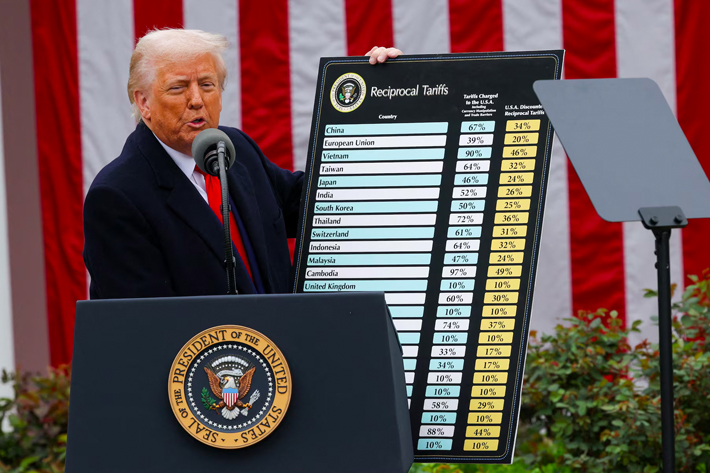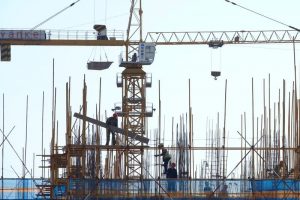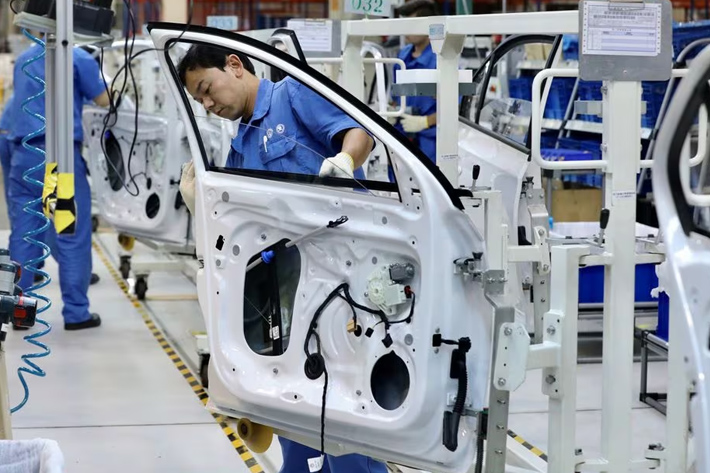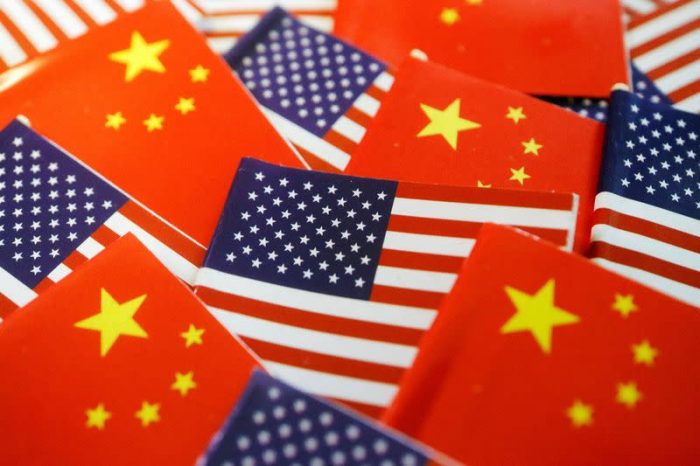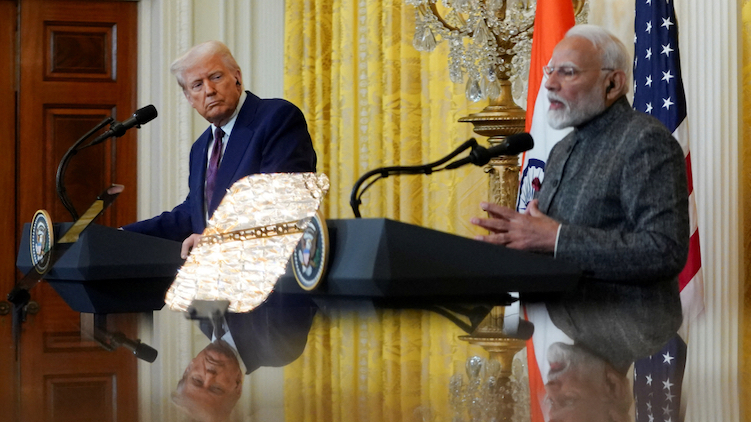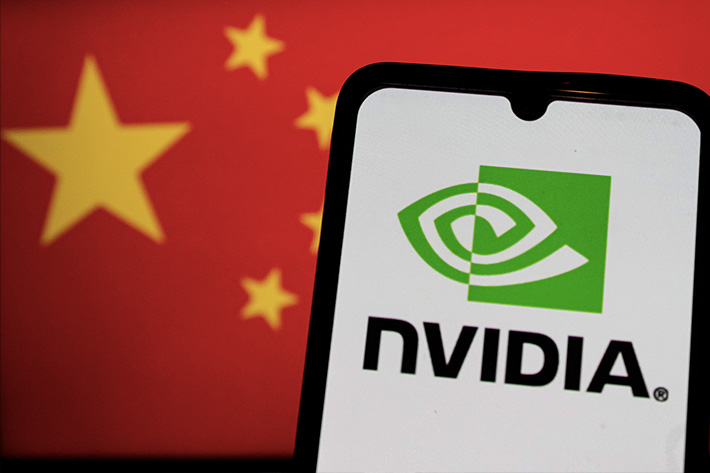News that a US trade court blocked most of President Donald Trump’s trade tariffs in a major ruling on Wednesday may only be a temporary setback for the White House.
That is the opinion of analysts at Golden Sachs, who said his trade goals can probably be achieved via other levies.
A three-judge panel of the Court of International Trade found the president overstepped his authority by imposing across-the-board duties on imports from US trading partners. It said the US Constitution gives Congress exclusive authority to regulate commerce with other countries – and cannot be overridden by the president’s emergency powers to safeguard the US economy.
ALSO SEE: BYD’s Big Gains Give Chinese EV Rivals a Giant Headache
“The court does not pass upon the wisdom or likely effectiveness of the President’s use of tariffs as leverage,” the judges said in the decision to issue a permanent injunction on the blanket tariff orders issued by Trump since January. “That use is impermissible not because it is unwise or ineffective, but because [federal law] does not allow it.”
USD and Asian markets rise
Financial markets cheered the ruling. The US dollar rallied 0.63% in the 24 hours after the court’s order, surging against currencies such as the euro, yen and the Swiss franc in particular. Wall Street futures rose and equities across Asia also jumped.
The Nikkei in Tokyo jumped by 1.9% on Thursday, while the Hang Seng Index in Hong Kong was rose 1.35% and the BSE Sensex in India was up by nearly 0.4%.
The judges also ordered the Trump administration to issue new orders reflecting the permanent injunction within 10 days.
The Trump administration minutes later filed a notice of appeal and questioned the authority of the court.
The court invalidated with immediate effect all of Trump’s orders on tariffs since January that were rooted in the International Emergency Economic Powers Act (IEEPA), a law meant to address “unusual and extraordinary” threats during a national emergency.
The court was not asked to address some industry-specific tariffs Trump has issued on automobiles, steel and aluminium, using a different statute.
The decisions of the Manhattan-based Court of International Trade, which hears disputes involving international trade and customs laws, can be appealed to the US Court of Appeals for the Federal Circuit in Washington, DC, and ultimately the US Supreme Court.
Blow to Trump strategy creates uncertainty
Trump has made charging US importers tariffs on goods from foreign countries the central policy of his ongoing trade wars, which have severely disrupted global trade flows and roiled financial markets.
Companies of all sizes have been whipsawed by Trump’s swift imposition of tariffs and sudden reversals as they seek to manage supply chains, production, staffing and prices.
A White House spokesperson on Wednesday said US trade deficits with other countries constituted “a national emergency that has decimated American communities, left our workers behind, and weakened our defense industrial base – facts that the court did not dispute.”
“It is not for unelected judges to decide how to properly address a national emergency,” Kush Desai, the spokesperson, said in a statement.
The ruling, if it stands, blows a giant hole through Trump’s strategy to use steep tariffs to wring concessions from trading partners. It creates deep uncertainty around multiple simultaneous negotiations with the European Union, China and many other countries.
‘Sector-specific levies, other avenues possible’
But analysts at Goldman Sachs noted the order does not block sector-specific levies and there were other legal avenues for Trump to impose across-the-board and country-specific tariffs.
“This ruling represents a setback for the administration’s tariff plans and increases uncertainty but might not change the final outcome for most major US trading partners,” analyst Alec Phillips wrote in a note.
Trump has promised Americans the tariffs would draw manufacturing jobs back to US shores and shrink a $1.2 trillion US goods trade deficit, which were among his central campaign promises.
Without the instant leverage provided by tariffs, the Trump administration would have to find new forms of leverage or take a slower approach to negotiations with trading partners.
Initial reaction among Asian policymakers was muted, with Japan’s economy minister saying he would examine the details of the ruling, while the Bank of Korea said it saw the effective tariff rate on South Korean exports under the ruling falling to 9.7% from 13.3%.
Hong Kong’s financial secretary said the court decision would “at least bring President Trump to reason”.
‘Trade partners may slow negotiations’
In a note on Thursday, analysts at Nomura led by Chetan Seth said the court order “does not appear to invalidate the sector-specific tariffs announced earlier under different acts (such as tariffs on steel, aluminium, autos, auto parts, etc).”
“We think uncertainty over the trade/tariff picture still remains significantly high, as noted earlier this week … [and] there are a few reasons why we think it is still too early to conclude that tariff risks have completely disappeared.”
“We think these developments will also complicate the picture on trade deals that the Trump administration appears to be targeting, likely emboldening some key trading partners as they might look to slow the process of trade negotiations (pending court decisions) and/or not offer significant concessions,” they said.
So, Asian markets could remain choppy, driven by news related to US trade policies. But “should the tariffs turn out to be milder than our expectations or there is a long pause on tariffs due to the legal uncertainty .. we think Asian markets could trade towards our more bullish scenario,” they said.
More legal challenges pending
The ruling came in a pair of lawsuits, one filed by the nonpartisan Liberty Justice Center on behalf of five small US businesses that import goods from countries targeted by the duties and the other by 12 US states.
The companies, which range from a New York wine and spirits importer to a Virginia-based maker of educational kits and musical instruments, have said the tariffs will hurt their ability to do business.
“There is no question here of narrowly tailored relief; if the challenged Tariff Orders are unlawful as to Plaintiffs they are unlawful as to all,” the judges wrote in their decision.
At least five other legal challenges to the tariffs are pending.
Oregon Attorney General Dan Rayfield, a Democrat whose office is leading the states’ lawsuit, called Trump’s tariffs unlawful, reckless and economically devastating.
“This ruling reaffirms that our laws matter, and that trade decisions can’t be made on the president’s whim,” Rayfield said in a statement.
Trump has claimed broad authority to set tariffs under IEEPA. The law has historically been used to impose sanctions on enemies of the US or freeze their assets. Trump is the first US president to use it to impose tariffs.
The Justice Department has said the lawsuits should be dismissed because the plaintiffs have not been harmed by tariffs that they have not yet paid, and because only Congress, not private businesses, can challenge a national emergency declared by the president under IEEPA.
In imposing the tariffs in early April, Trump called the trade deficit a national emergency that justified his 10% across-the-board tariff on all imports, with higher rates for countries with which the United States has the largest trade deficits, particularly China.
The country-specific tariff rates were paused for 90 days a week later though the baseline 10% duty was put in place for most nations.
The Trump administration on May 12 said it was pausing the steepest tariffs on China while working on a longer-term trade deal. Both countries agreed to cut tariffs on each other for at least 90 days.
- Reuters with additional input and editing by Jim Pollard
NOTE: Further text was added to this report (comment by Nomura) on May 29, 2025.
ALSO SEE:
Nvidia ‘Plans Low-Cost Blackwell AI Chip For China’ After US Curbs
Beijing Says Latest US Chip Warning Puts Trade Truce at Risk
Mass Layoffs Avoided in China, But Export Sector Badly Shaken
Asian Markets Rise After US, China Agree to Cut Majority of Tariffs
China Lifts Tariff on US Goods to 125%, as ‘Hikes Become a Joke’
Tariffs on Imported Chips to be Announced Soon, Trump Says
Asian Economies Rocked by Trump’s Tariffs, Fears of Trade War
Carmakers Shares Tumble After Trump Announces 25% Auto Tariff
Xi Calls on Foreign CEOs to Help Protect Supply Chains
April 2 Set as Date for Unveiling of Trump’s Reciprocal Tariffs
Trump’s Steel Tariff to Hit Chinese Supply Lines via Other Nations




